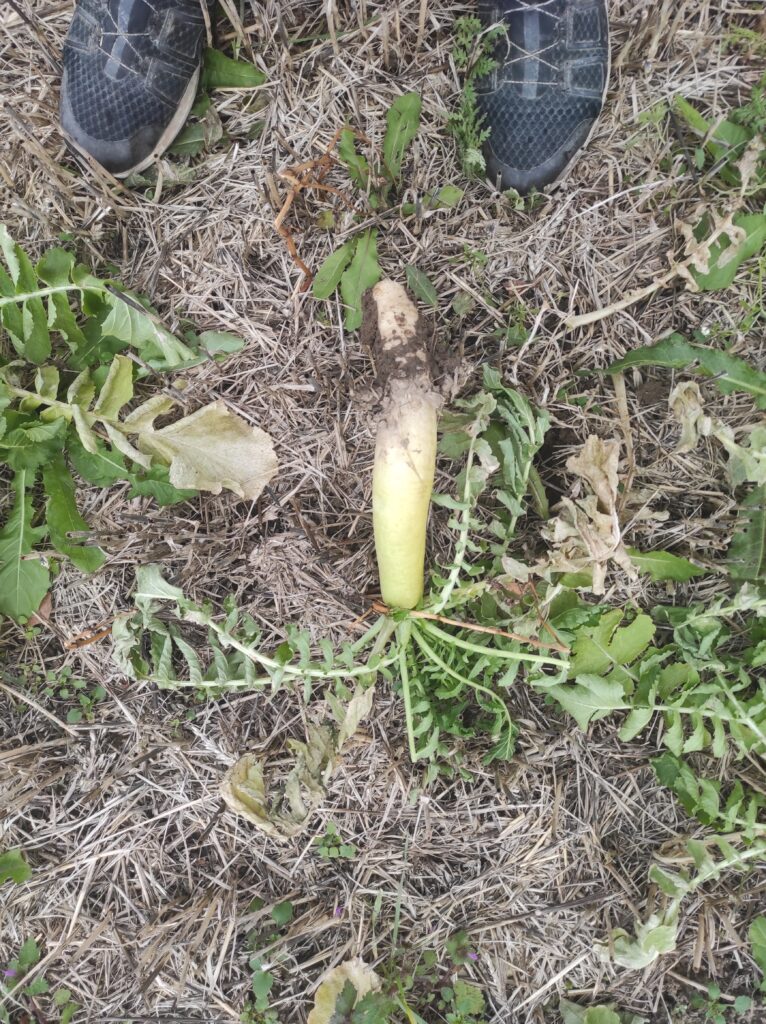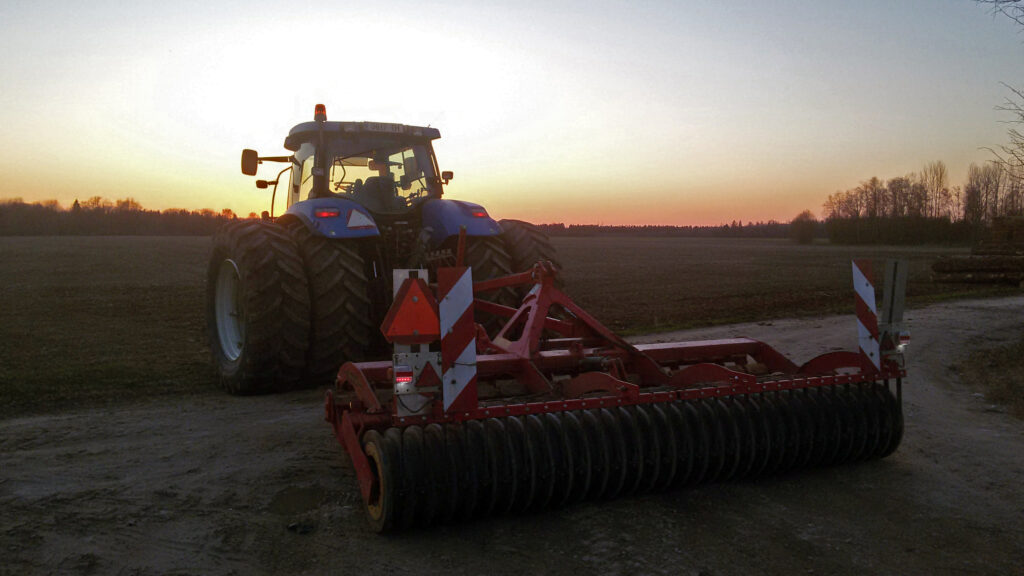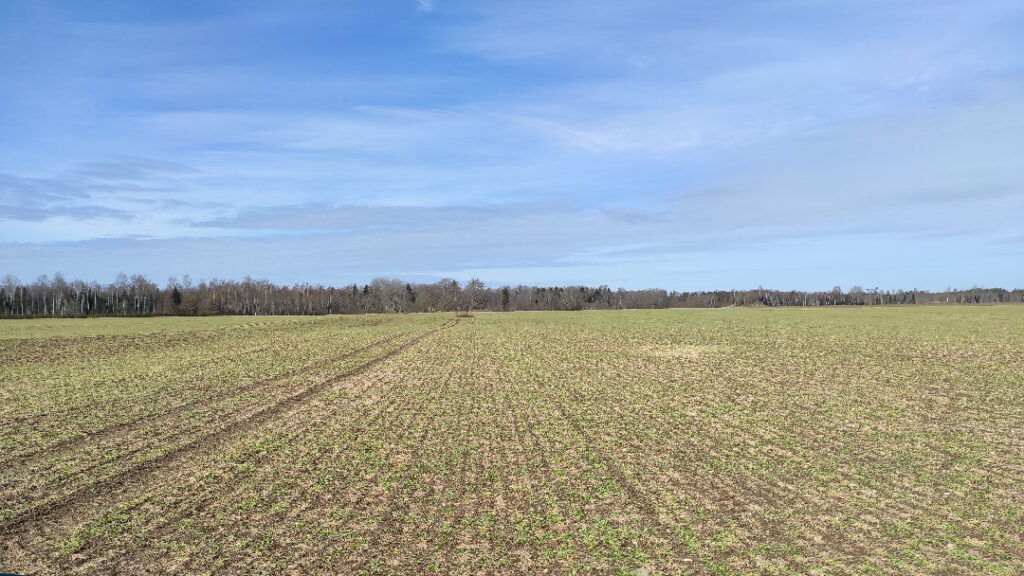While my previous post talked about the difficult financial situation in agriculture, I wouldn’t be a farmer if I threw in the towel at the first sign of trouble. To alleviate the current situation, I’m trying to find solutions to generate income and reduce costs.
I have joined eAgronom’s carbon program, where I am trying to implement practices on my farm that involve carbon trapping. According to the practices, the carbon dioxide I trap is assessed in tons, and certificates are issued, which I can sell to earn additional income for my business.
To increase carbon trapping, several practices need to be implemented:
- Reduce the use of fertilizers (highly welcome)
- Decrease soil tillage (primarily abandoning plowing, preferably using no-till)
- Leave crushed straw in the field (I have been doing this from the very beginning)
- Cultivate cover crops (which I will focus on in this article)
- Reduce fuel consumption (also welcome)
These practices align with my direction, and if implementing them can generate income.
- I have essentially abandoned plowing; I haven’t plowed some fields for 7-8 years, so this practice was easy.
- Direct seeding is a topic for the future, and the current situation doesn’t favor making a large investment, but the goal is set.
- Leaving straw in the field has never been a question.
- Reducing fuel consumption is mainly related to direct seeding; I can make some small changes now, but with the current heavy cultivator-based tillage, achieving a significant decrease in costs is difficult.
Reducing fertilizer use and cultivating cover crops are interrelated. Cover crops bring up nutrients from deeper layers and “unlock” the nutrients found there, while leguminous crops provide a favorable nitrogen background for the succeeding crop.
Cultivating cover crops has a significant effect on carbon trapping, and all the other benefits that come with it (nutrients, diversity, soil constantly alive, drought resistance, etc.) made me want to invest in this practice.
I won’t dwell here on the benefits and suitability of various cover crops because a. I’m still experimenting, b. I know VERY little about them, c. see points a and b.
My focus is on sowing technology. My crop rotation is as follows: field peas -> winter barley -> winter rapeseed -> winter wheat -> spring barley/oats. Cover crops would follow winter wheat and spring barley/oats in my practice. Currently, I don’t see the possibility of sowing cover crops into preceding winter crops because the growing season is short, and the effect is minimal, but as is usual in agriculture, everything can change.
In Estonia, more advanced farmers have been experimenting with cover crops for years, and so far, the practice has been to sow cover crops after harvesting the main crop. However, this method didn’t fit well into my schedule for the following reasons:
- Cover crops have little time to grow, especially if the autumn is cool and winter arrives early.
- Dealing with seeding during harvest doesn’t fit my household due to a lack of labor and machinery.
- Soil tillage and seeding are additional costs.
So, I started looking for options on how I could sow cover crops earlier than usual, perhaps within standing crops, and if I could combine some tasks. Sowing small-seeded crops with a fertilizer drill didn’t work for me due to the width of my tech tracks, 36m; the small seeds simply don’t fly that wide. After some searching, I came across an interesting implement called the Techneat Outcast, which is brought to Estonia by Agritehnika. Originally designed for distributing slug pellets on a sprayer, but the primitive engineer in me thought it could also work well for sowing cover crops. Mounted on the sprayer, I could sow cover crops and, for example, spray fungicide simultaneously. I decided to invest in this machine, and on a beautiful day in May, it was attached to my sprayer.

There is a 400l tank, doser, and fan on the front of the tractor, which blows the seed into a distribution head behind the sprayer, where it is divided between 3 cyclones. Under the cyclones are discs that spread the seed over a width of 12m (36m); I can also work at 24m, then two cyclones work.
I also conducted a small test with oats, and it seemed that the machine worked. At one point, eAgronom also came to see this wonder (which was the third in Estonia and the second known to have been working).

On July 18th, I tried sowing clover into spring barley because this field will be undersown with grass until the autumn of 2024, so it made sense to test the seeder in the field conditions before sowing cover crops. Due to my own foolishness, I could only sow clover at a third of the normal rate, but otherwise, it seemed fine.
On July 30th, I began sowing cover crops, using mustard and winter vetch. This sowing didn’t go entirely smoothly either, and it turned out that the fan couldn’t blow hard enough to move the winter vetch seed, and the cyclones got clogged. To solve this, I reduced the rate and increased the fan speed to twice the permitted level; it made some odd noises but at least it didn’t break.
What did I learn and what can I do better:
- A more powerful fan is needed (luckily, the factory offers this).
- The hoses need to be laid out more straightly.
- The possibility of cyclone blockage needs to be eliminated.
- Sowing should be done earlier (especially for winter vetch).
- Since spreading the seeds does not provide the necessary soil contact, it could be worth trying 10%, 20%, and 30% larger sowing rates side by side in one field to see if and how much it increases plant density (it was a bit sparse).
- Experiment with different sowing times – for example, 1.5 months before harvest, 1 month before harvest, and 0.5 months before harvest.
On August 2nd, I sowed a mixture of buckwheat, mustard, and radish into winter wheat and mixed it with a mixer. This time I got the rate right, but again, the cyclones tended to get clogged. The solution was to make the holes larger, and now it almost worked. And then it was just a matter of waiting for the results.

I harvested the wheat field with buckwheat mixture on August 11th; the buckwheat had already started to grow at cutting height.
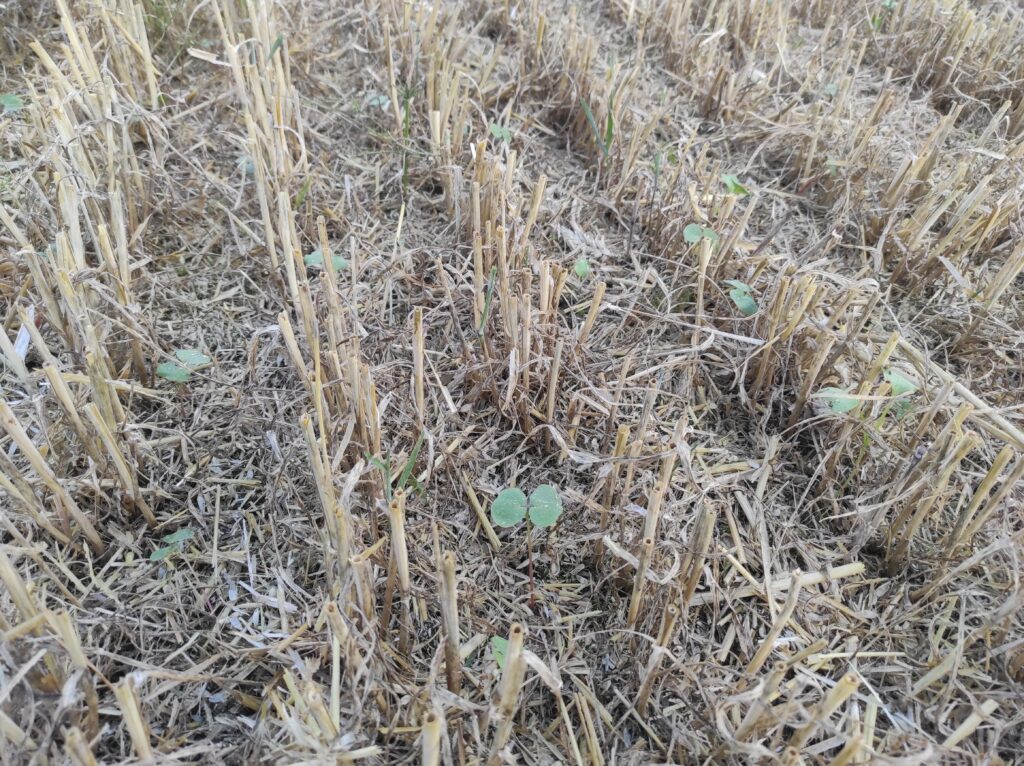
On August 30th, the radish and mustard were visible.
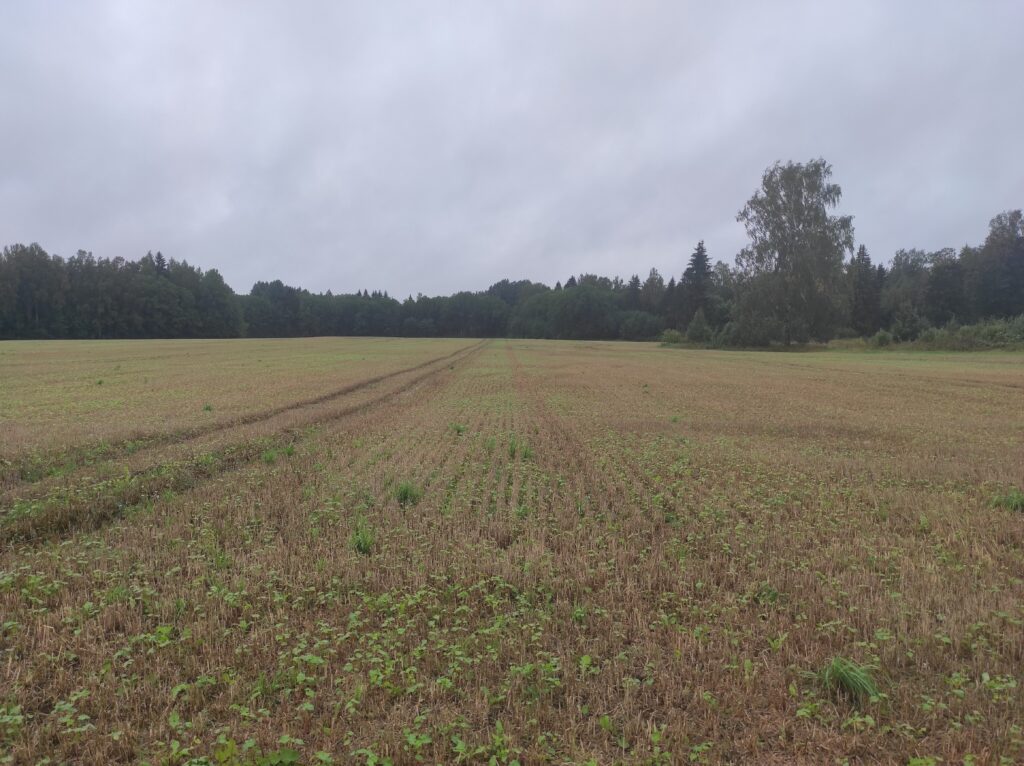
On September 14th:
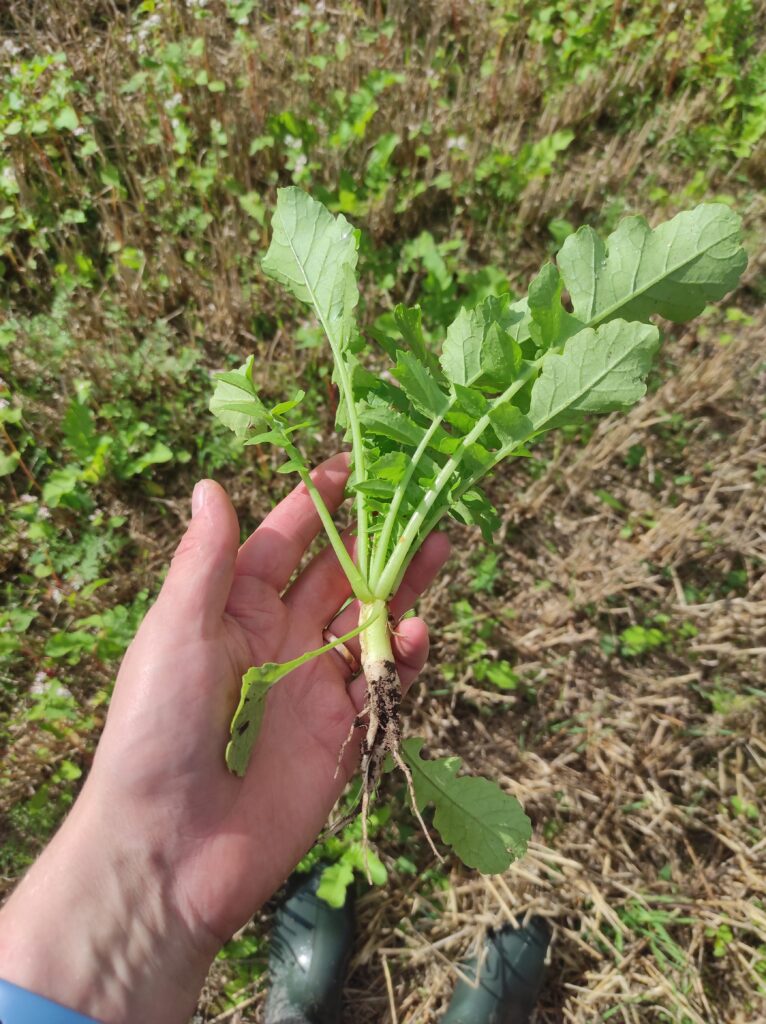
On September 30th, the overall picture:
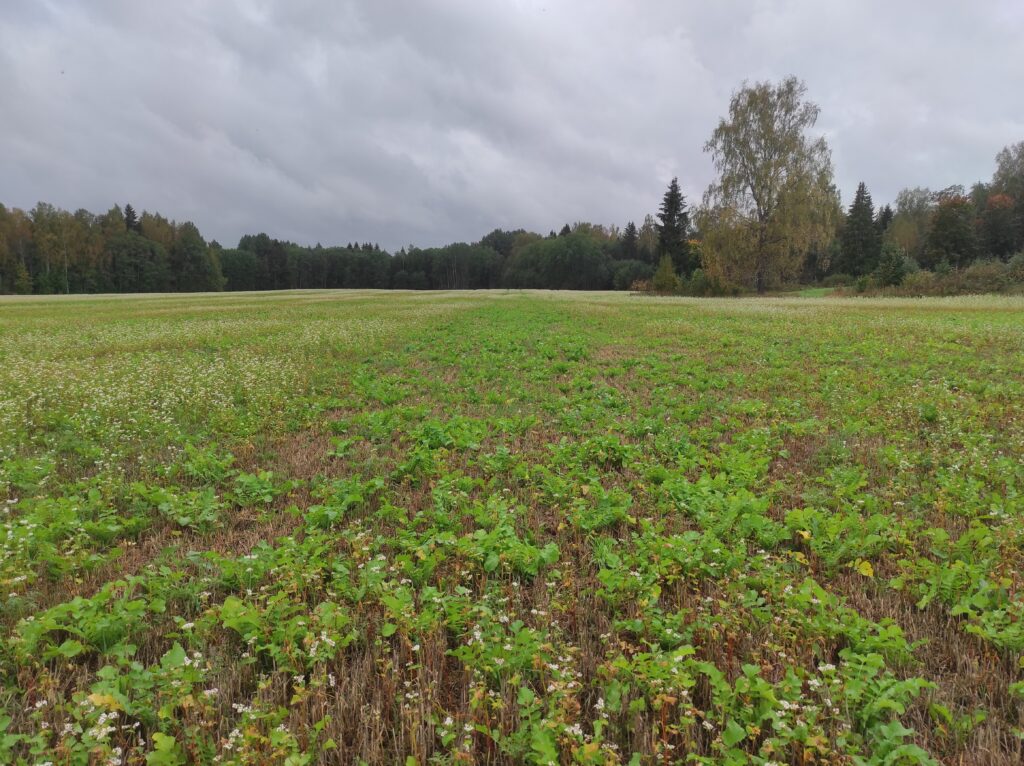
On October 27th, the cold has arrived, the buckwheat is dead.

The radish grew quite well.
